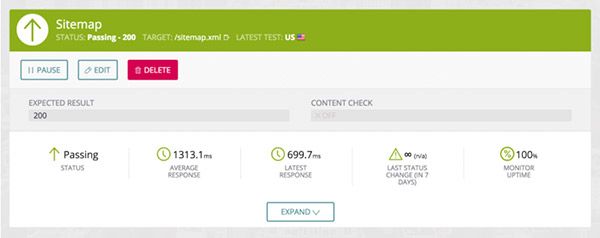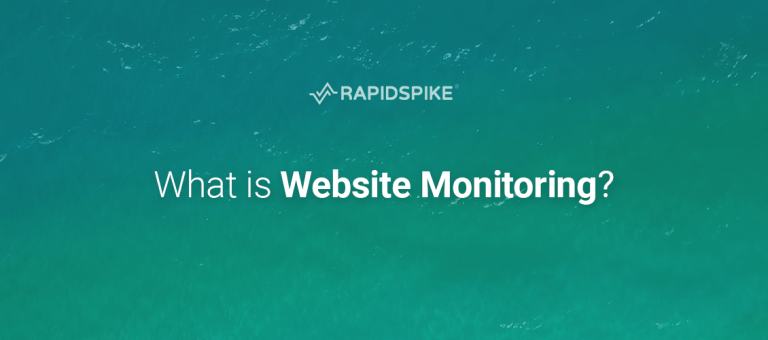When you first join RapidSpike and add in a website monitor we run some basic assurance checks as standard. We call this level one assurance.
This includes standard uptime checks – making sure your most popular pages are all live (with Status 200 OK) – but other checks are more subtle. One in particular is where we check for the existence of a Sitemap.
Nothing groundbreaking so far I guess but it may come as a surprise that many of the sites that we check fail at this first hurdle.
Why the missing sitemaps?
Why might the sitemap be missing? There are a number of clear reasons – in a rapid development cycle this small detail may have been missed. Perhaps the site had a sitemap at launch but during the course of time it was lost in all the daily chaos and forgotten about.
Most web teams are naturally focused on speed and reliability so it not hard to imagine how this could happen. In fact, many organisations outsource the build and support of the website so are often blissfully unaware that this important piece of the jigsaw is missing.
The fact is, that the Sitemap is widely undervalued and often misunderstood. I used to think its role was to allow site visitors to navigate through a website faster if they got lost 🙂 In my defence that is technically true – but the more compelling reason is much more fundamental.
So what is a sitemap?
The Sitemap allows a website manager to inform search engines about URL’s on a website that are available for crawling.
It is essentially an XML file that lists the URLs of a site. It exists to allow search engines to crawl your site more intelligently and efficiently. For example: when the page was last updated, how often it changes and so on.
Larger sites tend to employ nested sitemaps – maps that lead to other maps – to reduce the size of each individual map and to maintain the site’s structure. For example, an ecommerce site might have a separate map for products – or even separate maps for each type of product.

Time is also a factor. Search engine crawlers are allotted a time budget per site so the faster they can crawl your site the more content they can index.
In other words, a sitemap is a file or opportunity to inform search engines about your site content. Great for SEO as relevant, timely content is absolutely critical to your ranking success.
Also, your sitemap can provide valuable metadata associated with the pages you list in that sitemap. For example when the page was last updated, how often the page is changed, and the importance of the page relative to other URLs in your site.
So do I need to monitor my sitemap?
If you are a web hero and your site is properly organised and linked you could argue that you don’t need a sitemap, however I would argue that you are vastly increasing the web crawler’s ability to identify all of the content on your site if you have one.
After all, why take a chance and make life hard for yourself? With SEO being such a critical factor for online success you need all the help you can get! So make the sitemap a key part of your assurance strategy, check for its existence and make sure that it is up to date.
Monitoring your sitemap with RapidSpike is perfectly simple: when you add a website we’ll include it as part of the set of monitors we suggest.
Once your sitemap monitor is up and running, you can get even cleverer with it by setting up a Content Check (also known as a Content Match) to look for specific words or phrases within the map. RapidSpike will then alert you, for example, if an important page is missing from the sitemap – a great way to stay on top of this valuable resource.
So – do you have a Sitemap? Is it live and up-to-date right now?
How do you know?







